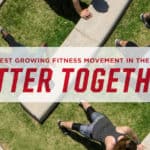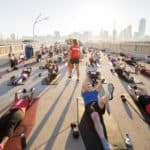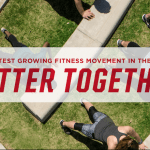
Research has shown that those who regularly eat out are more likely to gain weight in comparison with those who eat more home-cooked meals. In addition, those who eat more meals at home are less likely to be deficient in essential macro and micronutrients to support optimal health.
In the last decade, fast food, takeout, and dining options have doubled, and more and more Americans are eating more calories than their bodies are expending, hence the growing obesity epidemic. Our lives are busier than ever, we have less time to exercise, and the convenience of eating take-out is winning against our mission to be healthier versions of ourselves.
As a personal trainer, many of my clients explain how busy life gets with work, after-school sports, extracurricular activities, and family commitments that sometimes eating out or picking something up is just a much more convenient way to put food on the table. In an ideal world, I’d say, “Make time for your health! Set time aside time each week to prepare your groceries and weekly meals,” as I honestly believe that preparation is the ultimate key for achieving success.
However, if eating out is a must, then these are some of my tips for eating healthy when eating out!
Choose healthier places to eat.
Look for places that offer a fresh salad base with a lean protein source. These are vital macronutrients required for healthy nutrition and muscle growth, and it’s a good starting point for keeping calories low. Here in Lake Nona, we have a number of great places to choose from that offer dine-in and takeaway options. Some of my personal favorites include Bolay, Chipotle, Rubios, Canvas, Nona Blue, Chroma Restaurant, Urban Hibachi, and the new Island Fin Poke opening soon. Having more vegetables on your plate is the key to feeling fuller but not blowing out your calorie intake, which leads me to my next point.
Load up on the good stuff.
It is important to understand macronutrients in order to eat healthily. Fill your plate with more fresh vegetables; this will provide you with a variety of vitamins and minerals that the body needs (the more colors the better). Then think about a lean protein source for muscle growth and repair and then a moderate carbohydrate and fat source for energy. A good visual representation to remember portion sizes is two handfuls of vegetables, one palm-sized protein source, and one handful of carbohydrates. There will always be hidden fats and carbohydrates in sauces, dressings, and cooking oil, so be mindful of these.
Dressing on the side.
Asking for sauces or dressing on the side is an easy way to reduce unnecessary calories. Most sauces and dressings are loaded with sodium, fats/oils, and sugar, and often those preparing the food are very generous with their dressing. By having the sauce on the side, you can somewhat control these additives, and over time, this will help the waistline.
Grilled or baked rather than fried.
According to Anita Jones-Mueller, president and founder of Healthy Dining, all fried foods absorb some oil; usually between 8-25% of the weight of deep-fried food comes from oil. Just to put things into perspective, one tablespoon of olive oil is approximately 120 calories. This is in addition to the food that is being fried, so you can see how calories from fried foods can easily stack up.
Skip the appetizer or dessert.
Desserts and appetizers should be a once-a-week occurrence if you are trying to lose weight. If you regularly eat out, then skipping appetizers and desserts will help you immensely to stay within your recommended daily calorie requirements. Food options in these sections of the menu are generally very calorie-dense, poor in micronutrients, and typically heavy on the carbohydrates and fats. If you feel like eating extra, I would recommend an additional side salad.
Don’t overeat.
When food is in front of you, it is so easy to eat it even when you are not hungry. Don’t be afraid to take your food home and eat it later or the next day. We often do this at home; however, sometimes in a dine-in setting, we feel the need to eat everything on our plate before it is taken away. Spreading out calories throughout the day is a good way to allow your body to digest food and avoid feeling bloated due to overeating.
We are given one body, and it’s our responsibility to look after it. The food/fuel we put into our body will directly impact the way we look, feel, and perform, so remember these tips when picking up your next meal.
If you would like more health and nutrition tips, please contact me at vernicesalveron@campgladiator.com or stop by one of my Lake Nona boot camps.
Lake Nona Camp Gladiator times and locations are below. Currently offering a $10 special for unlimited classes for the entire month of September!
Vernice Salveron-Gasper CPT, Partner Trainer can be reached at (321) 947-9948 or vernicesalveron@campgladiator.com. Like Camp Gladiator on Facebook and follow @campGladiator on Instagram for exclusive offers, fitness tips, pictures, events, camp updates and more! Visit the website at campGladiator.com.
Camp Gladiator Location & Times
Lake Nona Family Dentistry – Monday, Tuesday, Thursday 5:15 a.m.
Spring of Life United Methodist Church – Tuesday, Thursday 5:45 p.m.
Moss Park Elementary School – Monday, Wednesday 6:30 p.m.
“To positively impact the physical fitness and ultimately the lives of as many people as possible.” – Camp Gladiator



